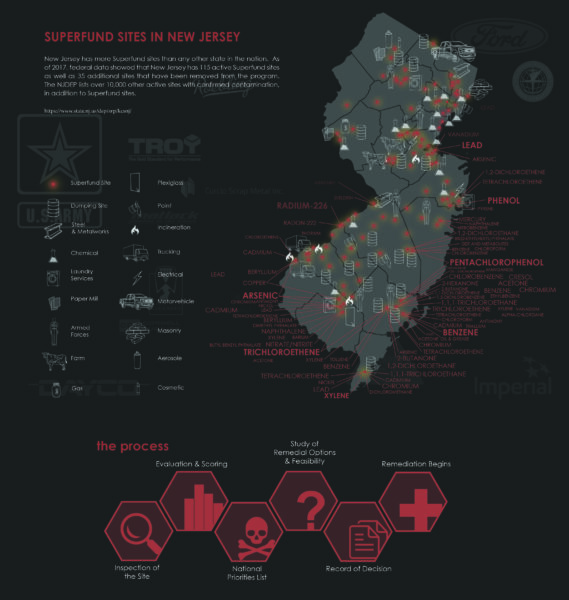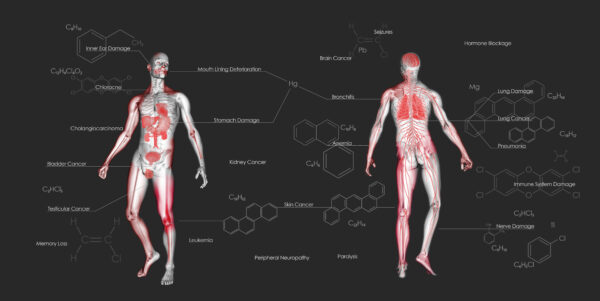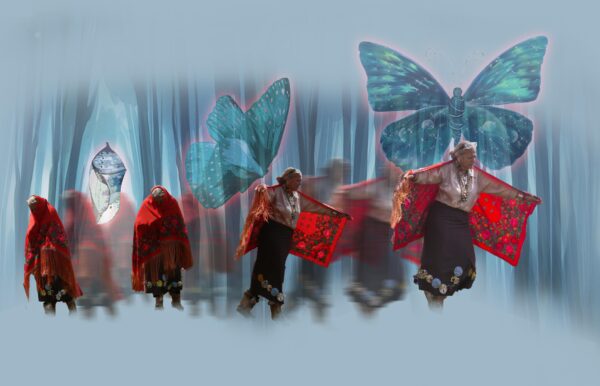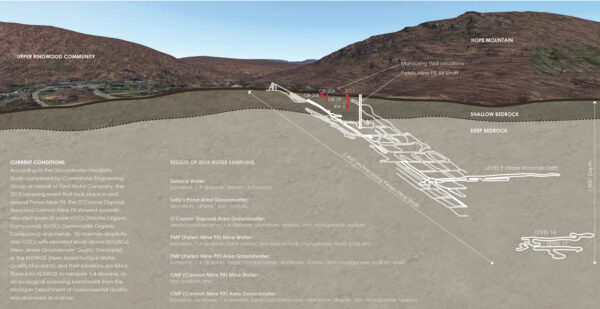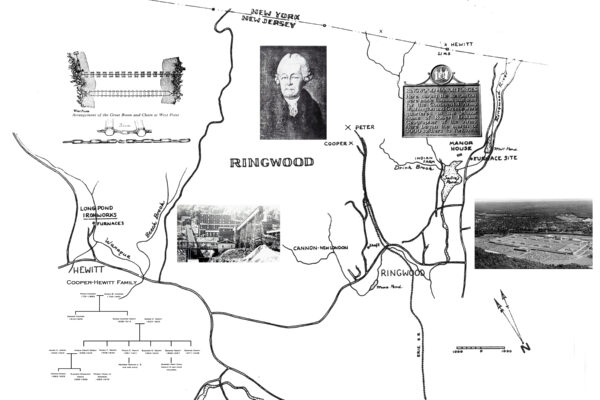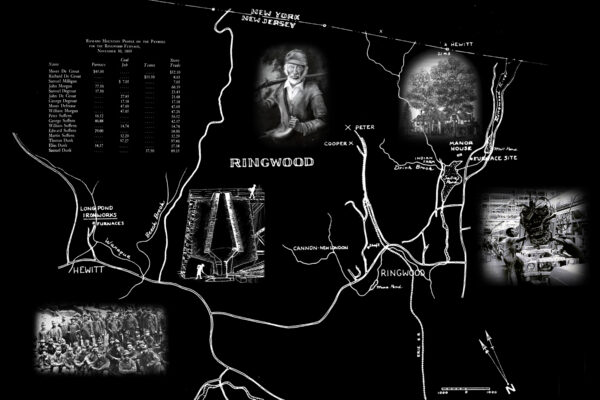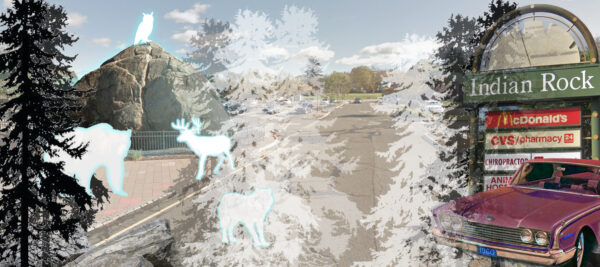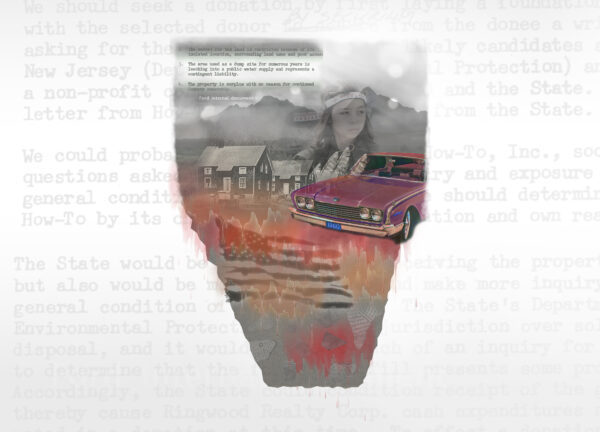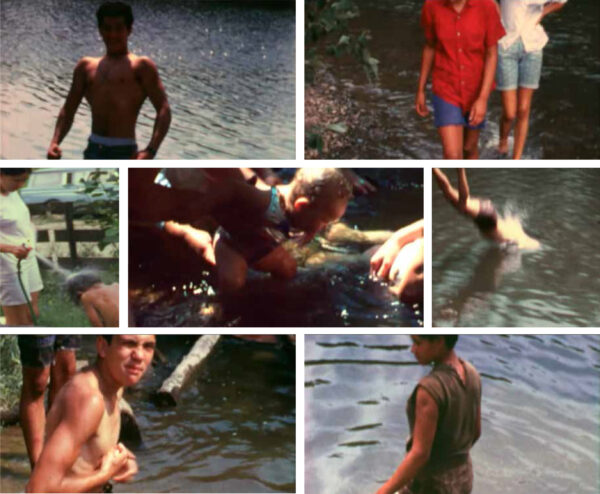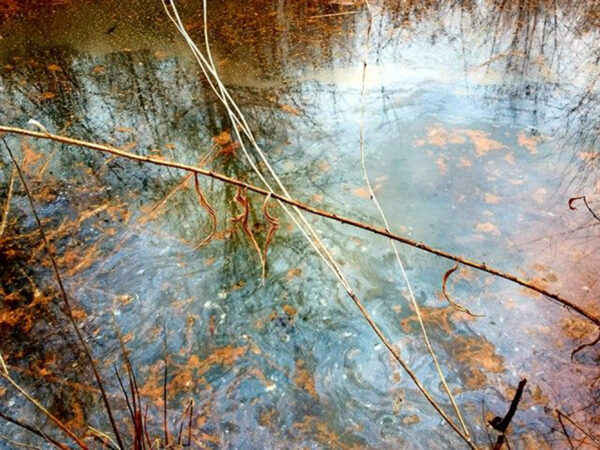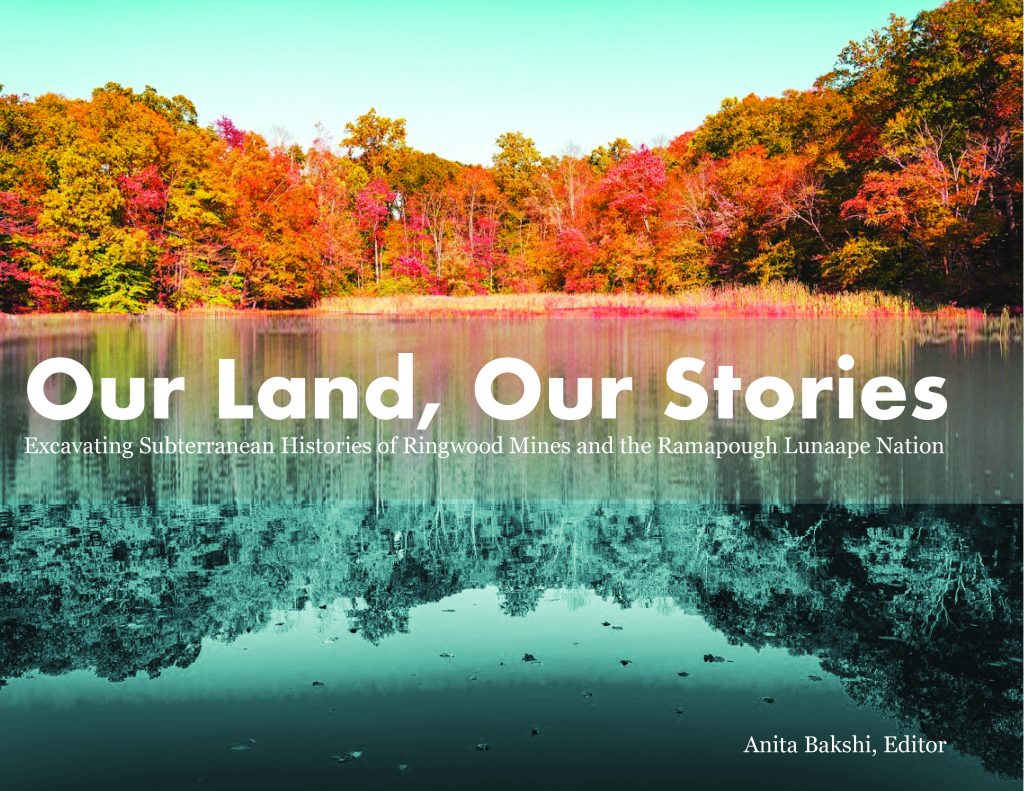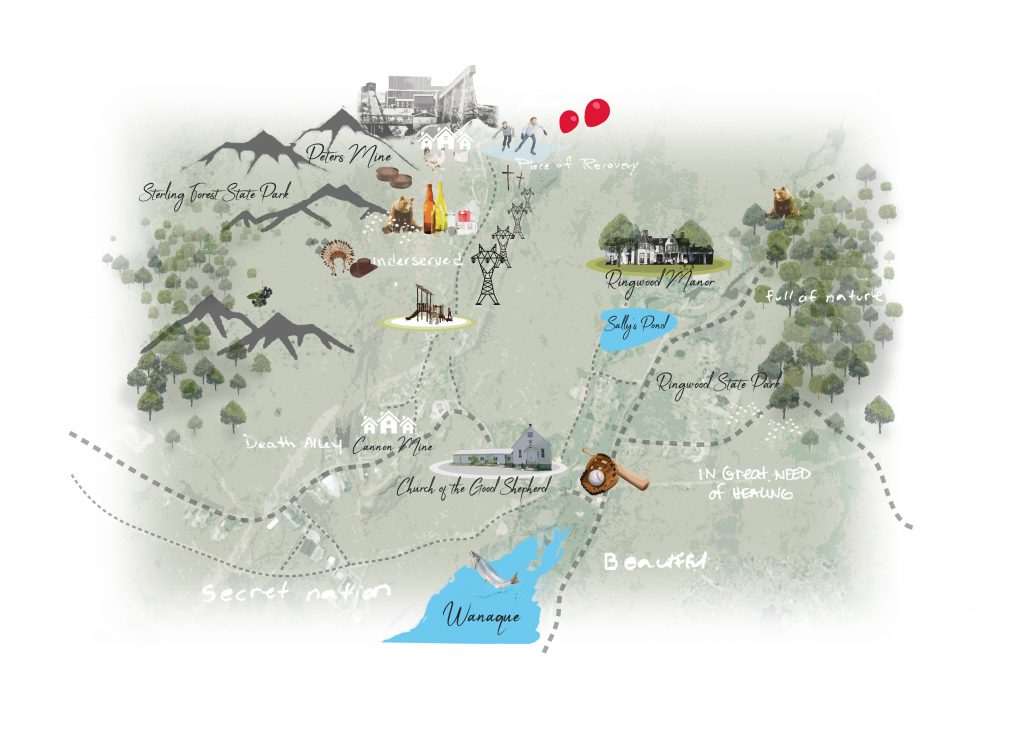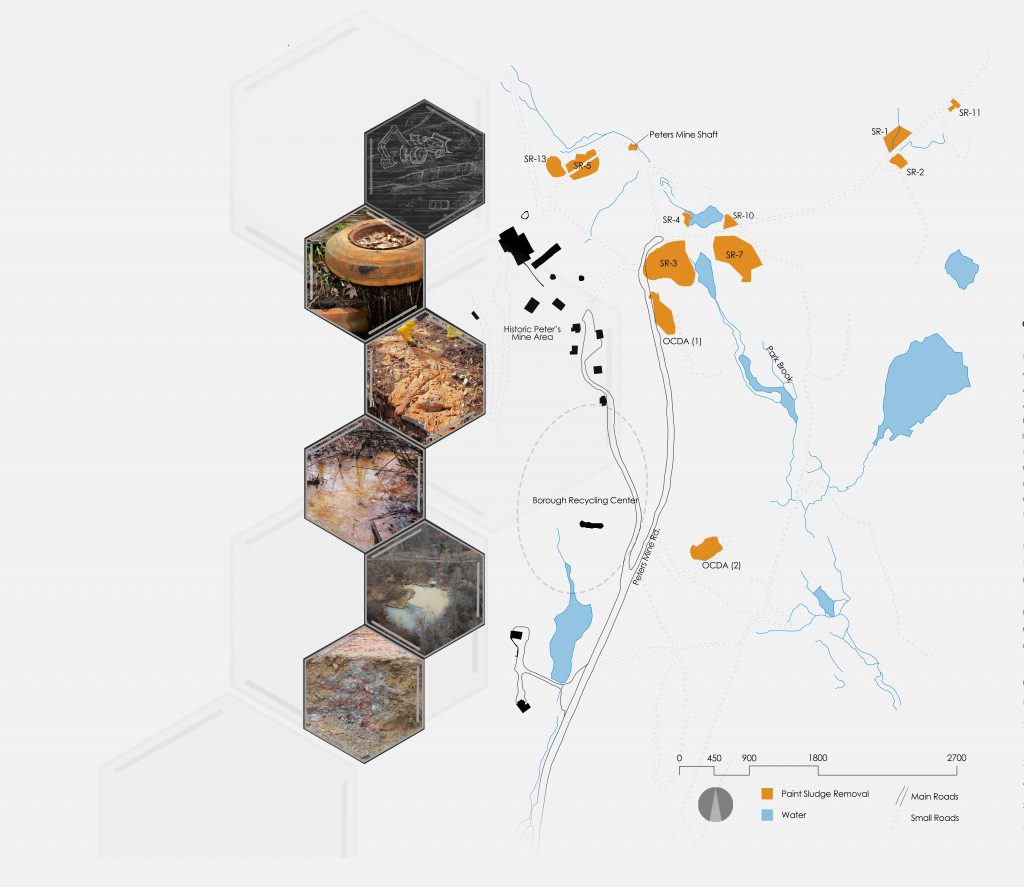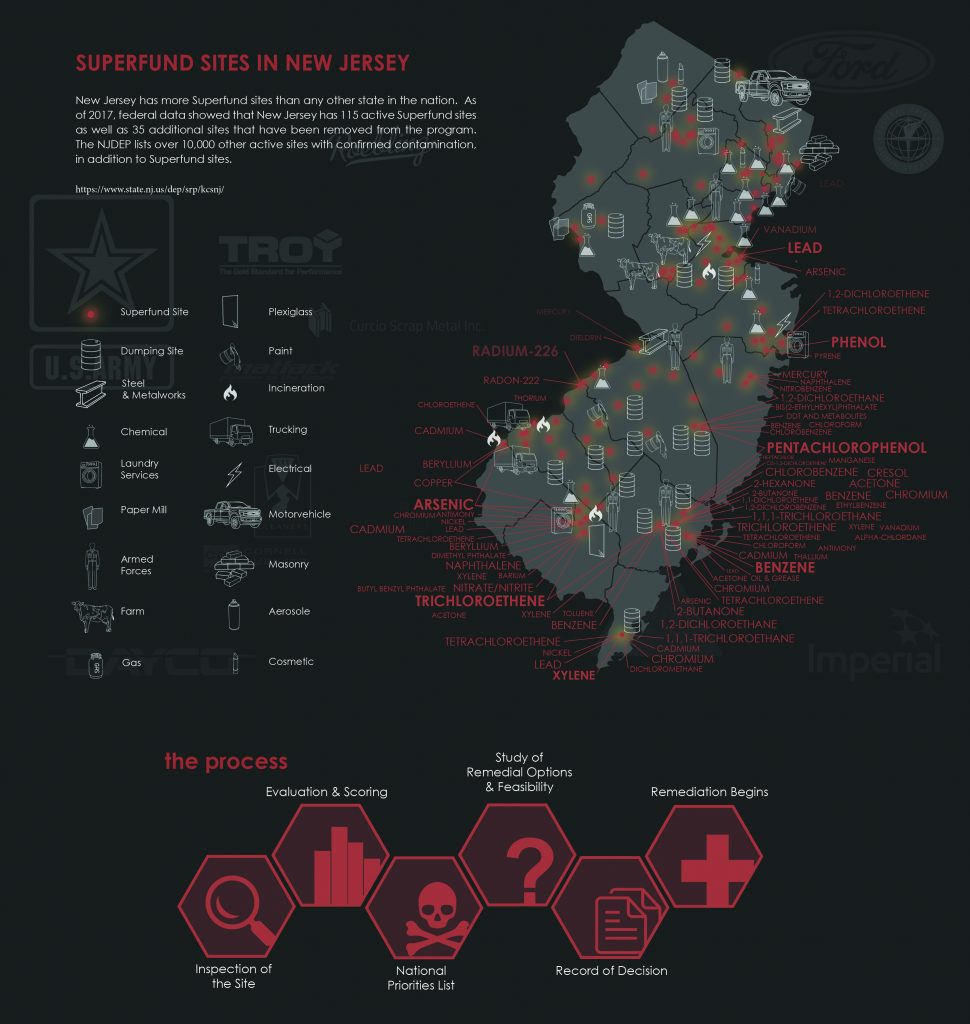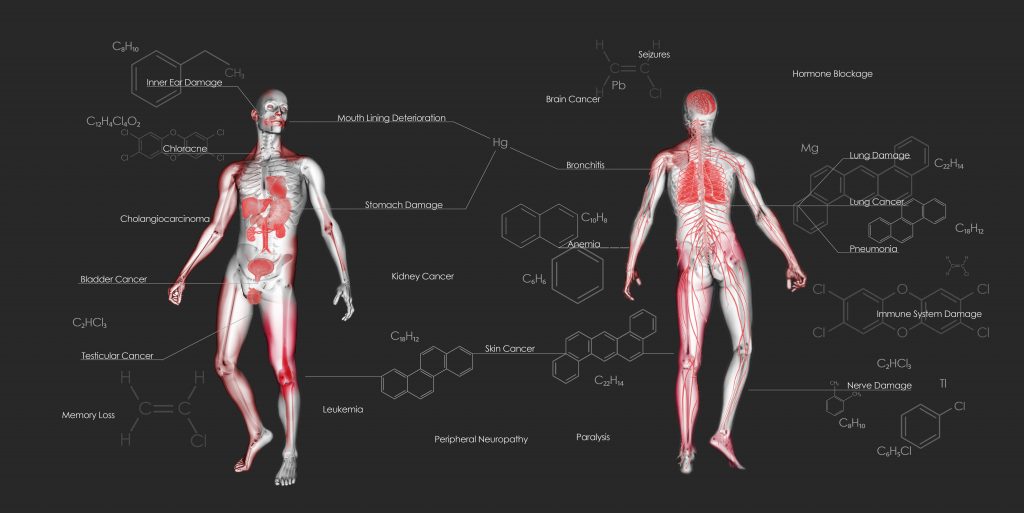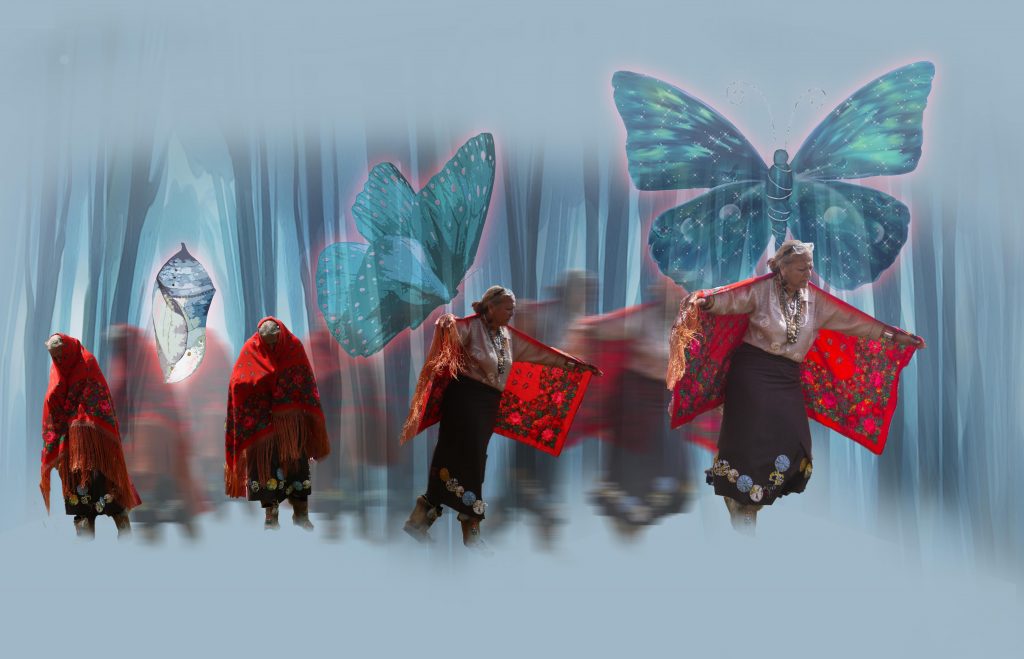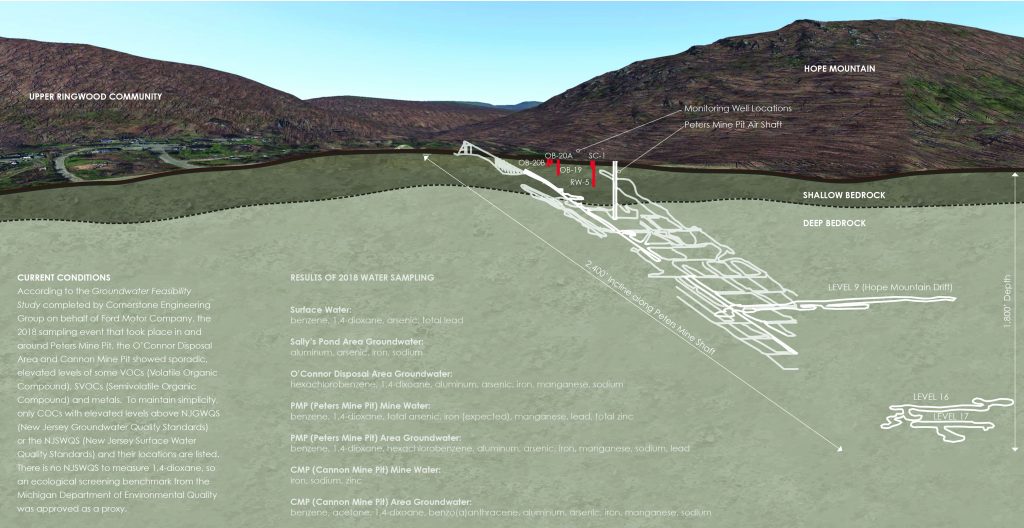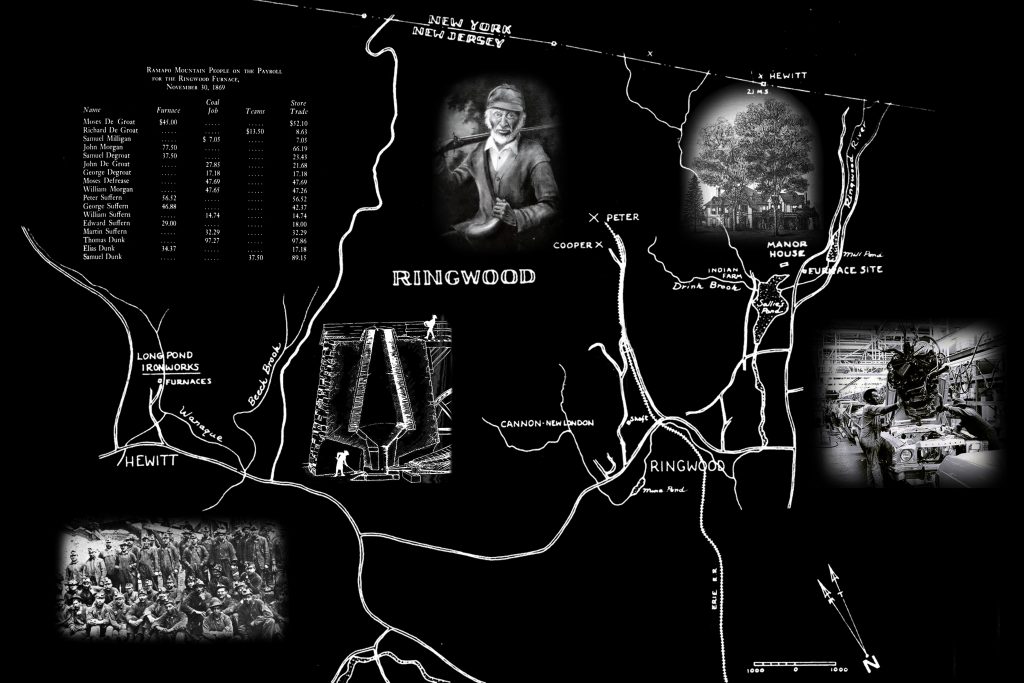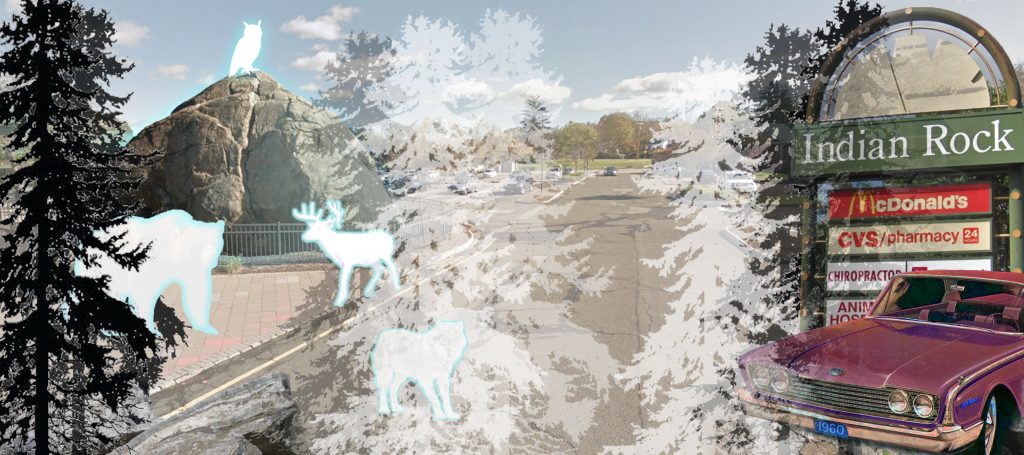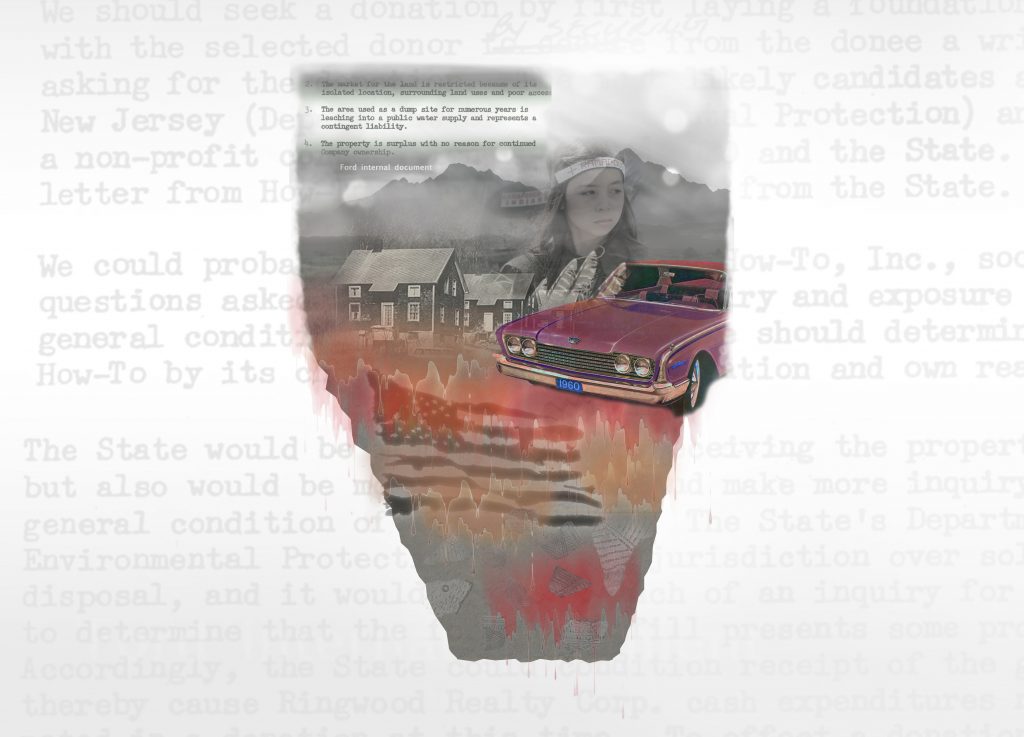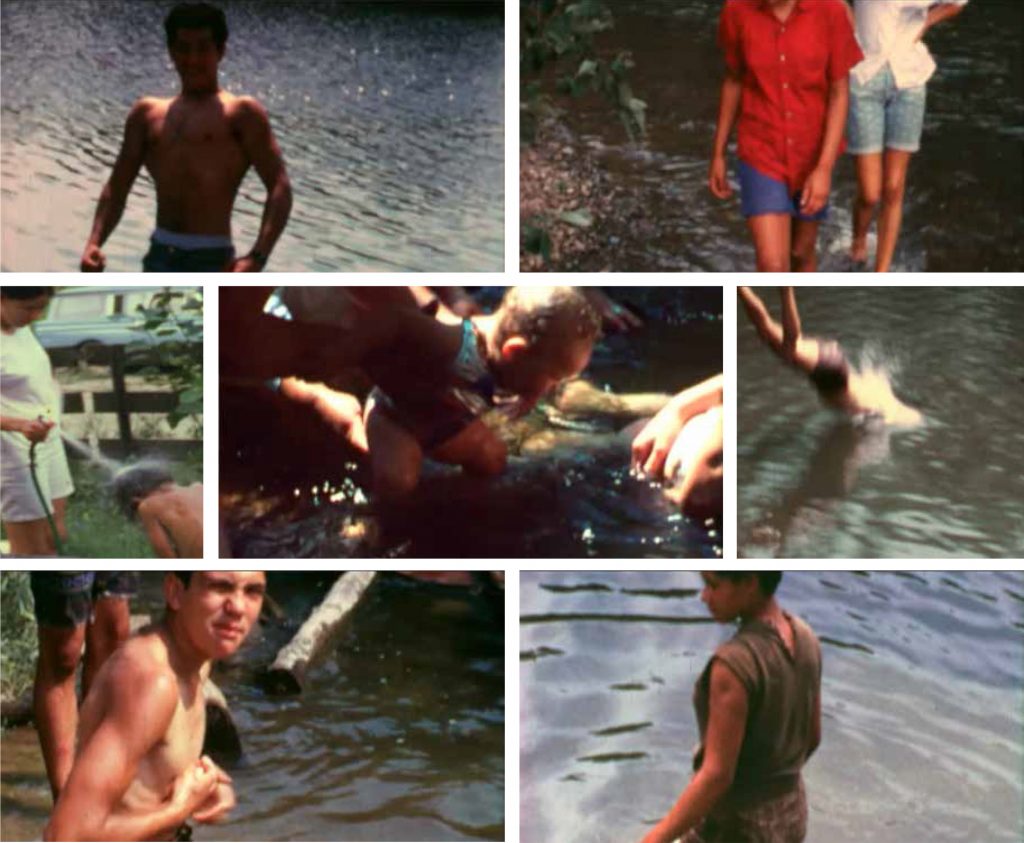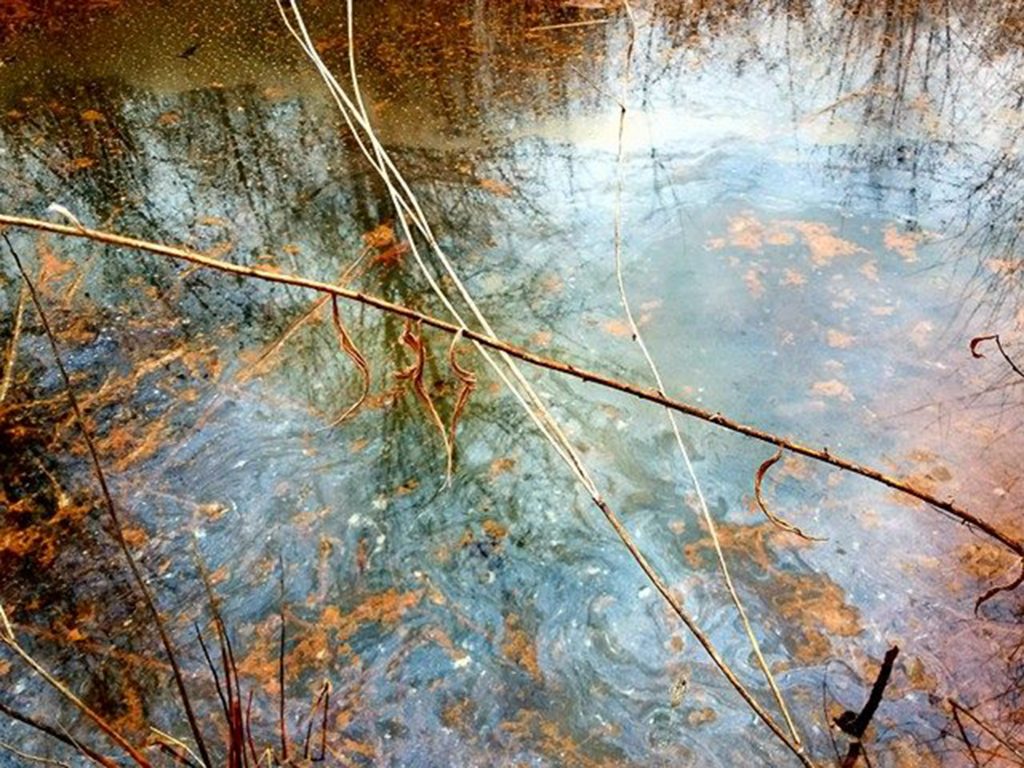Ringwood, NJ
A drawing of Peters Mine as it used to be, shown to us by a nearby resident.
All images are from Our Land, Our Stories: Excavating Subterranean Histories of Ringwood Mines and the Ramapough Lunaape Nation.
The Ringwood Mines Superfund Site, just upstream from the Wanaque Reservoir, is home to some members of the Ramapough Lunaape Turtle Clan. Ford Motors once used this site as a dumping ground for toxic paint sludge causing environmental degradation and increased rates of illness. EPA removed the site from the National Priorities List in 1994 although significant contaminants remain. It was the first site the EPA relisted in 2006.
For many Native American communities, contamination disproportionately affects subsistence lifestyles, spiritual practices, and connections to the land. Land rights have long been ignored. Land acquisition through eminent domain has resulted in the loss of farmland, forced relocation, and destruction of wildlife and plants.
The Ramapough are resisting this legacy by raising awareness, documented in Our Land, Our Stories: Excavating Subterranean Histories of Ringwood Mines and the Ramapough Lunaape Nation. “Stories are kept alive through the telling of what happened a hundred years ago; it comes into being and happens now.” —Chief Ronald Redbone.


